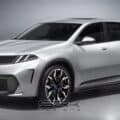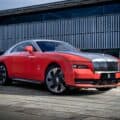One of the most famous BMWs ever made was the Isetta and it wasn’t even a BMW to start with. The Isetta was a microcar designed by an Italian company in the typical style of the 1950s. If you don’t know what that means, all you have to do is think back to the original Fiat 500 and you’ll soon start seeing resemblances between the two. And yet, as small and peculiar as the Isetta might’ve been, it proved to be a huge success.
The reason behind its laurels hid in the price tag and compact size. After the World War II Europe was lacking the materials needed for putting together expensive cars and people simply couldn’t afford them. Steel and all sorts of metals were scarce and people had to make due. Therefore, the Isetta was perfect for getting around town without sipping too much fuel of costing an arm and a leg. BMW actually bought the patent from Iso SpA and after modifying its underpinning and engine for a bit, built it on its own assembly lines to great success, selling in excess of 160,000 units over the years.
Now a forward-looking designer by the name of Justin Hyunjung Cho decided to give the Isetta a new look and send it straight to the future. As that future seems to become more and more crowded by the day, with people struggling more and more to find a use for their cars inside big cities, his take on the Isetta might actually be useful. In his sketches you can see that the base principles of the original were kept along.
The front end of the car opens to allow passengers to get in but since this is an electric car, the steering wheel doesn’t get in the way any more. On top of that, just like the original, the new Isetta is to be considered an eco-friendly approach, which wouldn’t consume a lot of energy. Of course, since this is the future we’re talking about, driving controls aren’t actually needed as this is a Level 5 autonomous car, right? It all sounds extremely intriguing and could actually become reality with BMW focusing more and more on EVs and autonomous technology.





































































